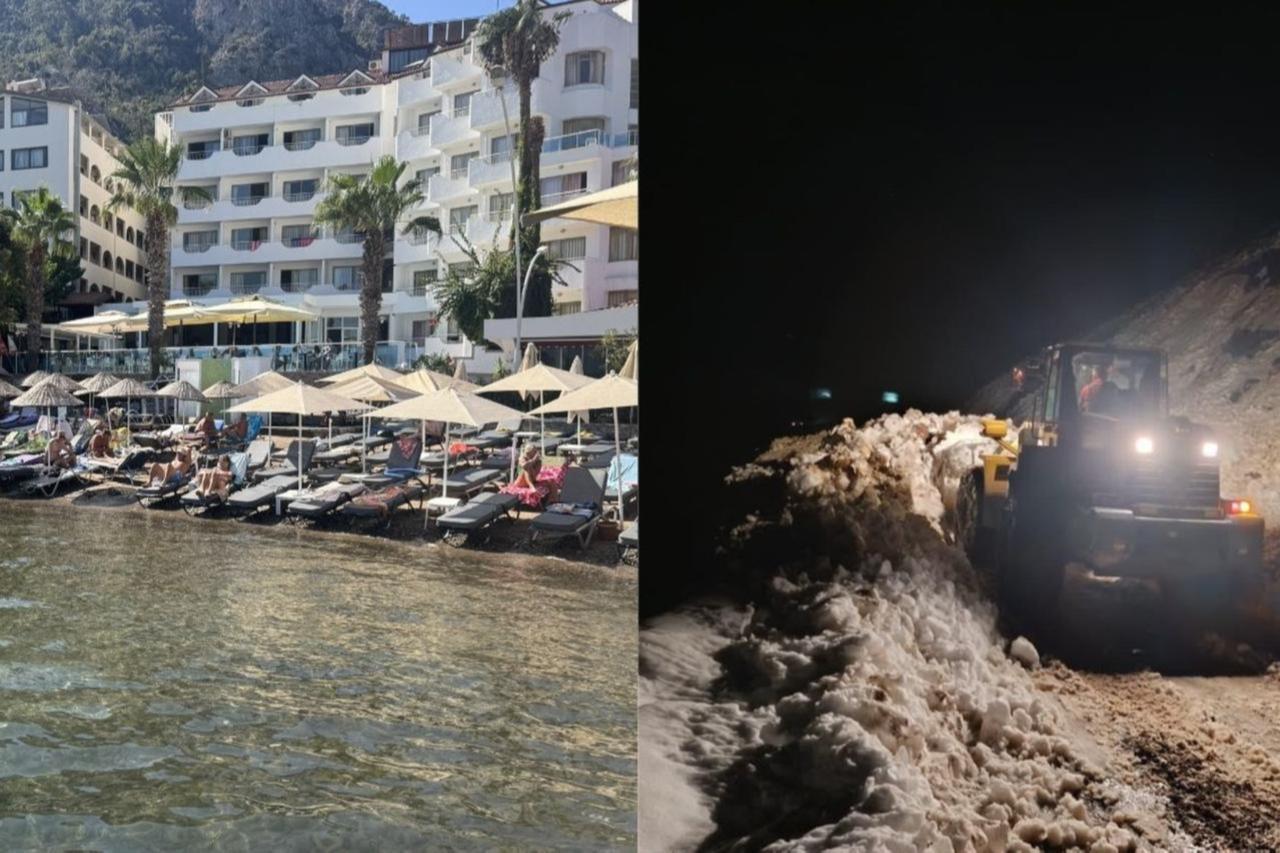
Türkiye is witnessing a striking seasonal contrast as early snowfall arrived in the Black Sea region while the country’s southern coast continues to experience summer like temperatures well into late September.
In the northeastern province of Rize, heavy snow covered the high-altitude areas of the Kackar Mountains, Ovit Pass, and upland plateaus such as Avusor and Kavron. In some locations, snow accumulation reached nearly 10 centimetres, transforming the typically green early-autumn landscape into a scene more reminiscent of winter.
The snowfall, which followed a period of heavy rainfall and cooler temperatures, has led to slippery conditions in mountain passes and limited visibility in remote areas. Residents of upland settlements have begun moving livestock and equipment to lower elevations as weather conditions become harsher.

While the northern highlands prepare for the arrival of colder weather, the situation in the south remains entirely different. In Mugla and other coastal provinces along the Aegean and Mediterranean, daytime temperatures continue to hover around 30 °C. Beaches remain crowded, and tourism activity is still at summer levels as warm seas and clear skies persist.
The stark difference highlights the strong influence of geography and elevation on Türkiye’s climate. The rugged terrain of the Black Sea region, with elevations exceeding 2,500 meters, allows for significant temperature variations even within the same month. Meanwhile, the southern coastline retains its warm Mediterranean climate well into autumn, creating a dramatic weather contrast between the country’s north and south.
Meteorological data suggests that conditions in the northeast are expected to remain cold in the coming weeks, with a possibility of further snowfall at higher altitudes. In contrast, southern regions are likely to maintain above-average temperatures until early October, before gradually cooling.